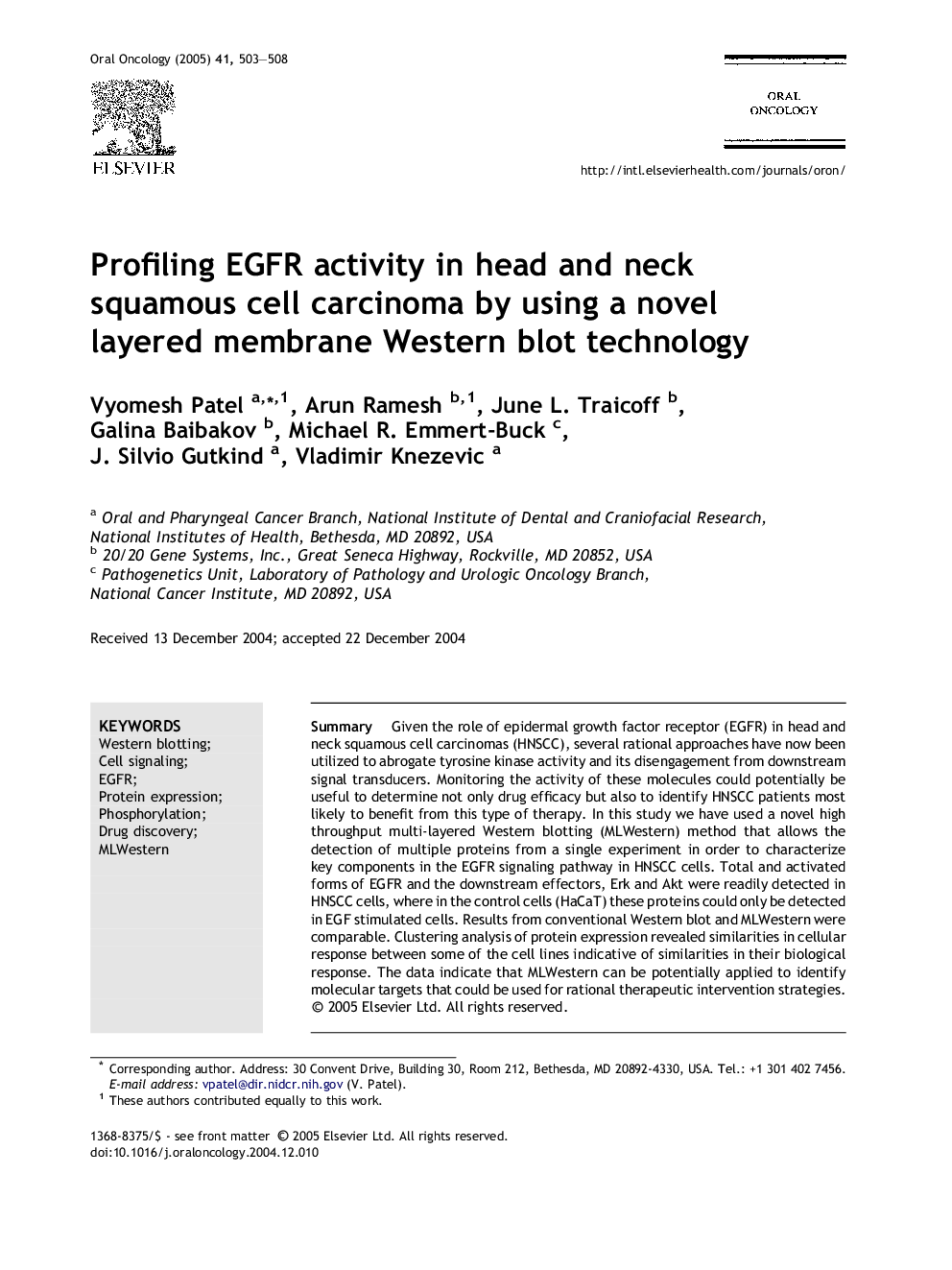| Article ID | Journal | Published Year | Pages | File Type |
|---|---|---|---|---|
| 9216846 | Oral Oncology | 2005 | 6 Pages |
Abstract
Given the role of epidermal growth factor receptor (EGFR) in head and neck squamous cell carcinomas (HNSCC), several rational approaches have now been utilized to abrogate tyrosine kinase activity and its disengagement from downstream signal transducers. Monitoring the activity of these molecules could potentially be useful to determine not only drug efficacy but also to identify HNSCC patients most likely to benefit from this type of therapy. In this study we have used a novel high throughput multi-layered Western blotting (MLWestern) method that allows the detection of multiple proteins from a single experiment in order to characterize key components in the EGFR signaling pathway in HNSCC cells. Total and activated forms of EGFR and the downstream effectors, Erk and Akt were readily detected in HNSCC cells, where in the control cells (HaCaT) these proteins could only be detected in EGF stimulated cells. Results from conventional Western blot and MLWestern were comparable. Clustering analysis of protein expression revealed similarities in cellular response between some of the cell lines indicative of similarities in their biological response. The data indicate that MLWestern can be potentially applied to identify molecular targets that could be used for rational therapeutic intervention strategies.
Related Topics
Health Sciences
Medicine and Dentistry
Dentistry, Oral Surgery and Medicine
Authors
Vyomesh Patel, Arun Ramesh, June L. Traicoff, Galina Baibakov, Michael R. Emmert-Buck, J. Silvio Gutkind, Vladimir Knezevic,
